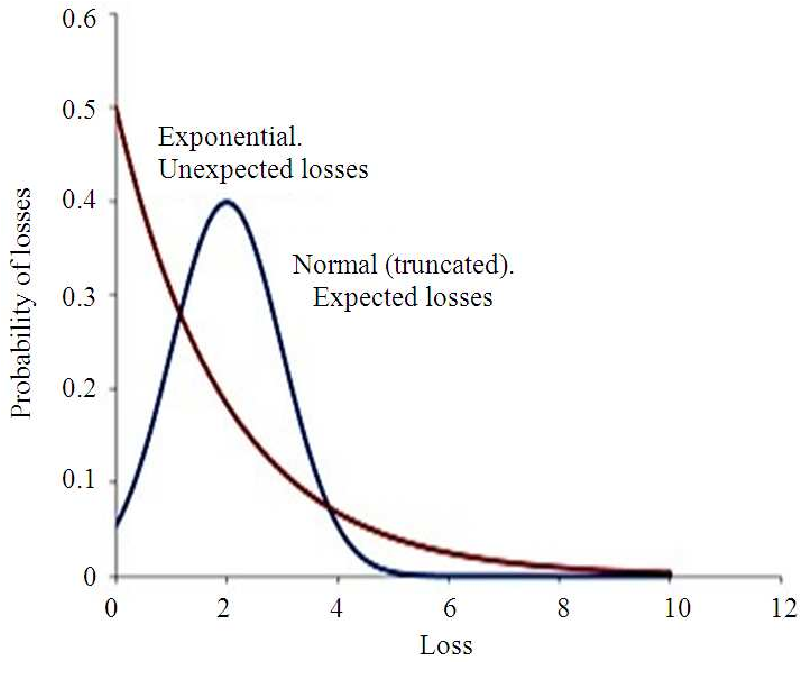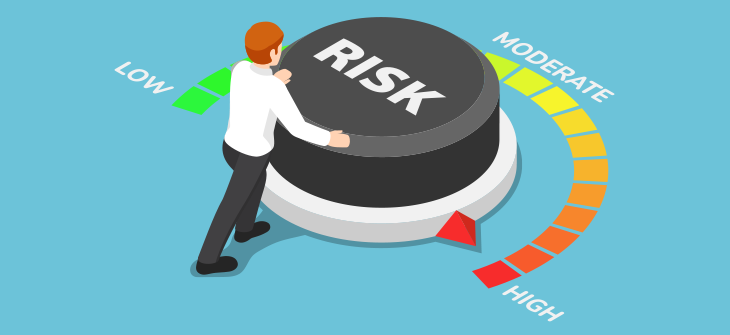Understanding How Failure to Make Timely Payments Can Escalate the Severity of Loss in Credit Markets
Introduction
Credit markets are complex ecosystems driven by intricate relationships between lenders and borrowers. One of the most critical facets of this dynamic is the dual elements of ‘credit risk’ and ‘loss severity.’ Credit risk refers to the likelihood of a borrower defaulting on their loan, while loss severity measures the impact of that default on the lender’s bottom line. These two metrics are crucial for understanding the performance and stability of credit markets.
In this extended blog post, we’ll delve into the interconnectedness of credit risk and loss severity, examining how failure to make timely payments exacerbates both these elements, creating a snowball effect that can have devastating financial consequences for both borrowers and lenders.

Definition and Importance
Credit risk is fundamentally about assessing the possibility that a borrower will not meet their repayment commitments. This is crucial for lenders, as it directly affects their return on investment and can potentially lead to financial losses.
Types of Credit Risk
- Default Risk: This is the risk that the borrower will fail to make the necessary principal and interest payments on the loan.
- Maturity Risk: Loans with longer terms generally pose a greater risk of default because the future is unpredictable.
- Sectoral Risk: The borrower’s industry can significantly influence their ability to repay a loan. For instance, someone working in a volatile industry like oil and gas may pose a higher credit risk.
Factors Affecting Credit Risk
Several factors can influence credit risk, ranging from macroeconomic conditions, such as unemployment rates and economic downturns, to individual factors like income level, employment stability, and past credit history. An understanding of these contributing elements helps lenders in making more informed decisions.
What is Loss Severity?
Loss severity refers to the economic impact of a default event on the lender. It is generally measured as a percentage of the lender’s exposure at the point of default.
Components of Loss Severity
- Collateral Value: The collateral’s worth provides a safety net for lenders.
- Legal Expenses: If a borrower defaults, the lender may need to engage in legal processes to recover the loan amount, thereby incurring legal fees.
- Administrative Costs: These include the expenses related to managing and recovering a defaulted loan, such as staff time, communication costs, and more.
Calculating Loss Severity
The calculation usually takes the form:
Loss Severity=Loss on DefaultExposure at DefaultLoss Severity=Exposure at DefaultLoss on Default
Where ‘Loss on Default’ includes the principal amount, lost interest, and associated recovery costs, and ‘Exposure at Default’ is the total amount the lender is exposed to at the time of default.

The Relationship Between Timely Payments and Loss Severity (400 words)
Making timely payments is not just about avoiding late fees. Consistent delays in payments can significantly influence the severity of loss in the event of default. Here are some ways how:
- Accumulation of Late Fees: One of the most immediate consequences of missing a payment is the imposition of late fees. These charges get added to the outstanding loan amount, increasing the borrower’s financial burden.
- Increased Interest Rates: Some lending agreements include clauses that permit the lender to increase the interest rate if the borrower defaults. This means that the cost of borrowing becomes more expensive, escalating the total amount owed.
- Depreciation of Collateral: Assets used as collateral can depreciate over time. If a loan defaults, the lender might find that the collateral’s value is no longer sufficient to cover the loss.
- Compounding Effect: Late payments often have a compounding effect where each missed payment makes it increasingly difficult to catch up, adding on late fees and potentially increased interest rates, which further escalates the potential loss severity for the lender.
Strategies for Mitigating Credit Risk and Loss Severity
For Borrowers
- Emergency Funds: Having an emergency fund can act as a financial cushion, allowing for continued loan payments even in adverse circumstances, thus lowering credit risk and potential loss severity.
- Financial Planning: A well-thought-out financial plan can help in timely debt servicing, which keeps credit risk and loss severity in check.
For Lenders
- Diversification: Spreading loans across various sectors can help in mitigating sector-specific risks.
- Dynamic Risk Assessment: Regularly updating risk assessment models can help in recognizing potential high-risk loans early on.
Conclusion
The dynamics of credit risk and loss severity are central to the functioning of credit markets. Failure to make timely payments triggers a chain of events that increase both credit risk and loss severity, making it an issue of utmost importance for both borrowers and lenders. Understanding the critical relationship between these two factors can help in developing strategies that benefit both parties and contribute to a more stable financial ecosystem. With proper risk management and responsible borrowing, it’s entirely possible to keep both credit risk and loss severity at manageable levels.
Credit Risk and Loss Severity: Understanding How Failure to Make Timely Payments Can Escalate the Severity of Loss in Credit Markets
Introduction
Credit markets are complex ecosystems driven by intricate relationships between lenders and borrowers. One of the most critical facets of this dynamic is the dual elements of ‘credit risk’ and ‘loss severity.’ Credit risk refers to the likelihood of a borrower defaulting on their loan, while loss severity measures the impact of that default on the lender’s bottom line. These two metrics are crucial for understanding the performance and stability of credit markets.
In this extended blog post, we’ll delve into the interconnectedness of credit risk and loss severity, examining how failure to make timely payments exacerbates both these elements, creating a snowball effect that can have devastating financial consequences for both borrowers and lenders.
Definition and Importance
Credit risk is fundamentally about assessing the possibility that a borrower will not meet their repayment commitments. This is crucial for lenders, as it directly affects their return on investment and can potentially lead to financial losses.
Types of Credit Risk
- Default Risk: This is the risk that the borrower will fail to make the necessary principal and interest payments on the loan.
- Maturity Risk: Loans with longer terms generally pose a greater risk of default because the future is unpredictable.
- Sectoral Risk: The borrower’s industry can significantly influence their ability to repay a loan. For instance, someone working in a volatile industry like oil and gas may pose a higher credit risk.
Factors Affecting Credit Risk
Several factors can influence credit risk, ranging from macroeconomic conditions, such as unemployment rates and economic downturns, to individual factors like income level, employment stability, and past credit history. An understanding of these contributing elements helps lenders in making more informed decisions.
What is Loss Severity?
Loss severity refers to the economic impact of a default event on the lender. It is generally measured as a percentage of the lender’s exposure at the point of default.
Components of Loss Severity
- Collateral Value: The collateral’s worth provides a safety net for lenders.
- Legal Expenses: If a borrower defaults, the lender may need to engage in legal processes to recover the loan amount, thereby incurring legal fees.
- Administrative Costs: These include the expenses related to managing and recovering a defaulted loan, such as staff time, communication costs, and more.
Calculating Loss Severity
The calculation usually takes the form:
Loss Severity=Loss on DefaultExposure at DefaultLoss Severity=Exposure at DefaultLoss on Default
Where ‘Loss on Default’ includes the principal amount, lost interest, and associated recovery costs, and ‘Exposure at Default’ is the total amount the lender is exposed to at the time of default.
The Relationship Between Timely Payments and Loss Severity
Making timely payments is not just about avoiding late fees. Consistent delays in payments can significantly influence the severity of loss in the event of default. Here are some ways how:
- Accumulation of Late Fees: One of the most immediate consequences of missing a payment is the imposition of late fees. These charges get added to the outstanding loan amount, increasing the borrower’s financial burden.
- Increased Interest Rates: Some lending agreements include clauses that permit the lender to increase the interest rate if the borrower defaults. This means that the cost of borrowing becomes more expensive, escalating the total amount owed.
- Depreciation of Collateral: Assets used as collateral can depreciate over time. If a loan defaults, the lender might find that the collateral’s value is no longer sufficient to cover the loss.
- Compounding Effect: Late payments often have a compounding effect where each missed payment makes it increasingly difficult to catch up, adding on late fees and potentially increased interest rates, which further escalates the potential loss severity for the lender.
Strategies for Mitigating Credit Risk and Loss Severity
For Borrowers
- Emergency Funds: Having an emergency fund can act as a financial cushion, allowing for continued loan payments even in adverse circumstances, thus lowering credit risk and potential loss severity.
- Financial Planning: A well-thought-out financial plan can help in timely debt servicing, which keeps credit risk and loss severity in check.
For Lenders
- Diversification: Spreading loans across various sectors can help in mitigating sector-specific risks.
- Dynamic Risk Assessment: Regularly updating risk assessment models can help in recognizing potential high-risk loans early on.
Conclusion
The dynamics of credit risk and loss severity are central to the functioning of credit markets. Failure to make timely payments triggers a chain of events that increase both credit risk and loss severity, making it an issue of utmost importance for both borrowers and lenders. Understanding the critical relationship between these two factors can help in developing strategies that benefit both parties and contribute to a more stable financial ecosystem. With proper risk management and responsible borrowing, it’s entirely possible to keep both credit risk and loss severity at manageable levels.



